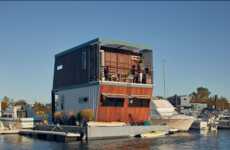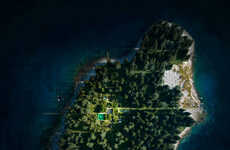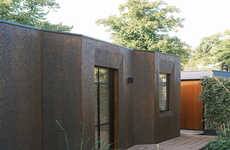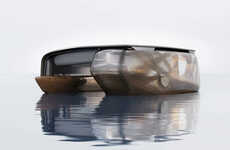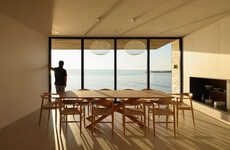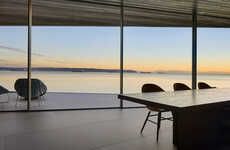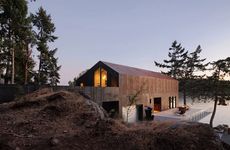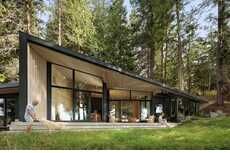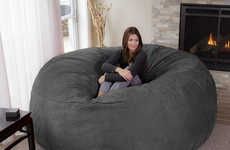
The Freedom Cove British Columbia House Resides on the Ocean
M — June 27, 2016 — Art & Design
References: mindbodygreen & apartmenttherapy
The Freedom Cove is a British Columbia House that is entirely sustainable with a dwelling that floats on top of the ocean. The abode is fashioned out of recycled materials and includes several different units that come together to form a house that offers an art gallery, lighthouse and even a series of greenhouses. The unit is entirely self-sustaining and eco-friendly to suit the landscape of the area.
British Columbia is well-known for its mountainous landscape, forests and vast coastal property and this home designed by Wayne Adams is an ideal example of how waterfront property can be converted into residential space. The home works conscientiously with the environment using recycled components, docks and green space to create a liveable space for Adams and his partner to live annually in.
British Columbia is well-known for its mountainous landscape, forests and vast coastal property and this home designed by Wayne Adams is an ideal example of how waterfront property can be converted into residential space. The home works conscientiously with the environment using recycled components, docks and green space to create a liveable space for Adams and his partner to live annually in.
Trend Themes
1. Floating Sustainable Housing - As floating home designs gain popularity, there is a disruptive innovation opportunity for the construction and real estate industries to develop and market affordable and sustainable options for those seeking alternative housing solutions.
2. Eco-friendly Materials - With the rise of sustainable living, there is a disruptive innovation opportunity for the materials and construction industries to develop cost-effective and eco-friendly building materials that reduce carbon footprint and waste, while maintaining structural integrity.
3. Modularity in Residential Space - As the demand for versatile and compact residential space increases, there is a disruptive innovation opportunity for the architecture and design industries to develop modular, mobile, and scalable living solutions that can function off-grid and on water or land.
Industry Implications
1. Construction Industry - The construction industry can take a disruptive innovation opportunity in designing, building, and marketing affordable floating homes that are sustainable and off-the-grid.
2. Real Estate Industry - The real estate industry can leverage the disruptive innovation opportunity in developing and promoting eco-friendly waterfront properties that offer a self-sufficient and unique living experience for homebuyers.
3. Design Industry - The design industry can exploit the disruptive innovation opportunity in creating modular, scalable, and resilient living spaces that maximize function and aesthetic appeal, while minimizing environmental impact and resource consumption.
6.7
Score
Popularity
Activity
Freshness


